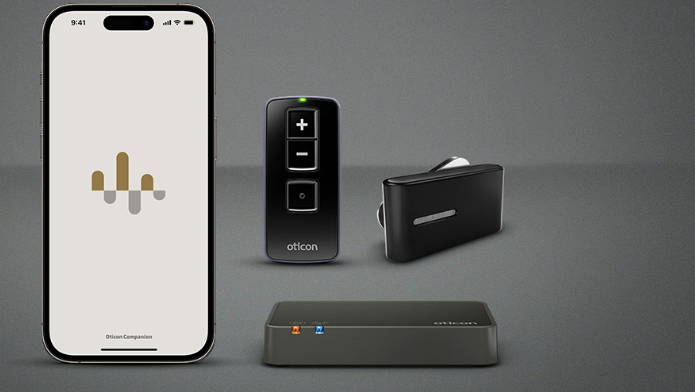
Hearing Aid Accessory Options
Some of the more popular hearing aid accessories include:
- Wireless accessories. Utilizing Bluetooth® technology, wireless accessories enable you to hear better in situations where there is a lot of background noise or distance between you and the speaker. These include wireless microphones, remotes and television headsets.
- Transmitters and receivers. These are helpful in educational situations (a teacher’s words are transmitted directly into the student’s ears) and for children. Transmitters and receivers work together to overcome background noise, distance and reverberation, and contribute to a better learning experience.
- Power adaptors and cords. These add versatility by allowing direct input from various audio sources (FM systems, MP3 players, TVs and computers). Available with both monaural and binaural cords.
- Earwax filters. Filters prevent earwax, a leading cause of damage to electronic components, from entering the hearing aid. This helps prolong the life of the instrument and provides you with clear, natural sound.
- Cleaning kits. Keeping your hearing aids clean can result in a longer life for your instruments. Cleaning kits give you a leg up on keeping your device in prime working condition. They typically include a wax removal brush and pick, a tube and vent cleaner, battery door opener and battery replacement magnet.
- Charging stations. For those with rechargeable hearing aids, a charging station is essential. Instead of having to fiddle with the battery compartments, users can simply place their hearing aids in the cradle for a few hours to get a full day’s worth of listening time.
- Alerting Devices. Alerting devices hook up to telephones, alarm clocks, doorbells and other electronic devices. They alert you through a loud sound or flashing light, making you aware of an incoming phone call, a visitor at the door, etc.
Assistive Listening Devices
Assistive Listening Devices, or ALDs, aim to make specific sounds clearer. They can reduce the frustration of missing details in environments where background noise or distance muffles audio. ALDs connect to a specific sound source, such as a television, microphone, or phone, amplifying that sound directly for the user. This selective amplification means users don’t hear all ambient sounds but instead focus on one primary source, making it easier to enjoy conversations, music, or public performances.
From evaluation to treatment, Lake Jackson Audiology is by your side. Call (979) 299-1520 to schedule your appointment.